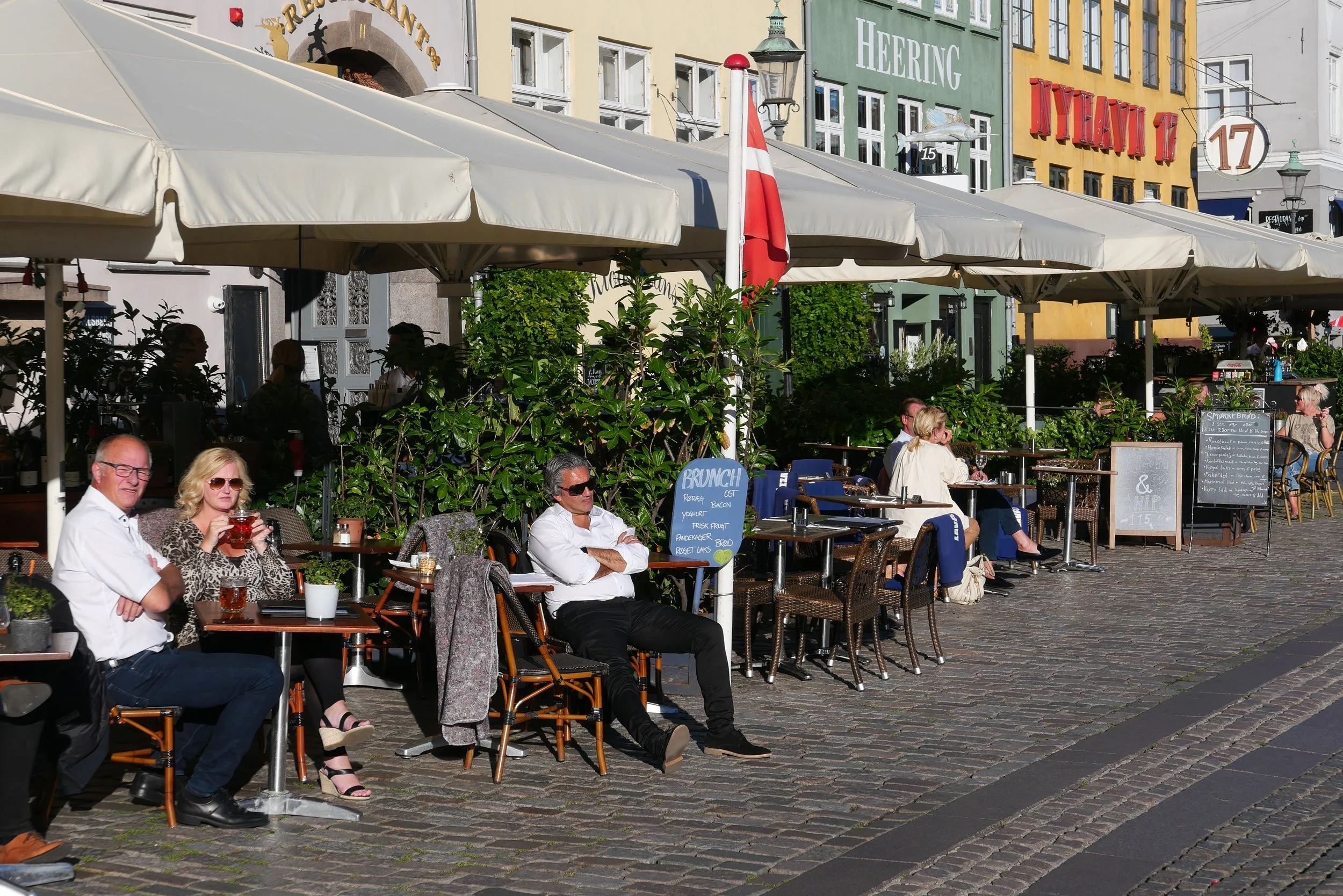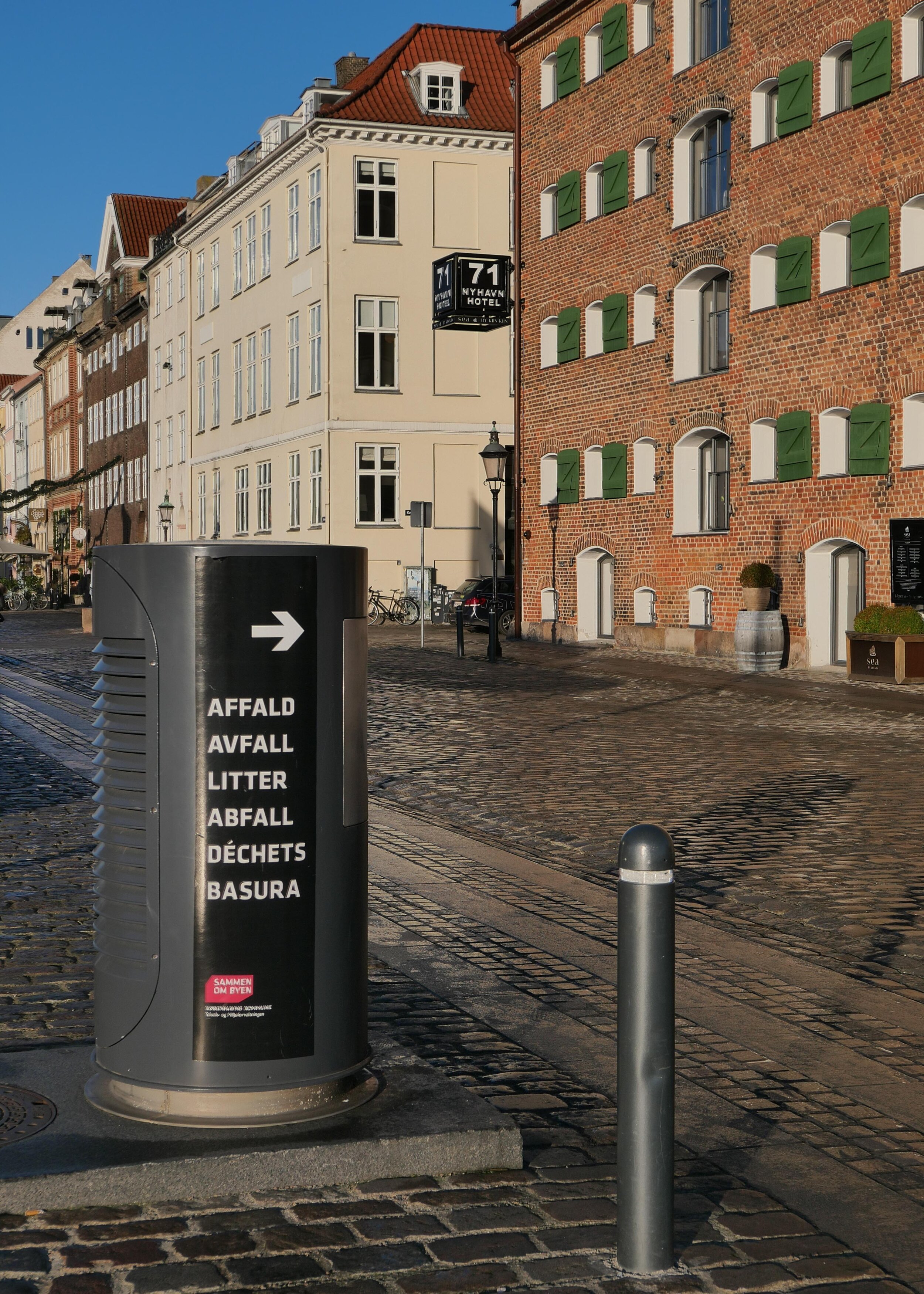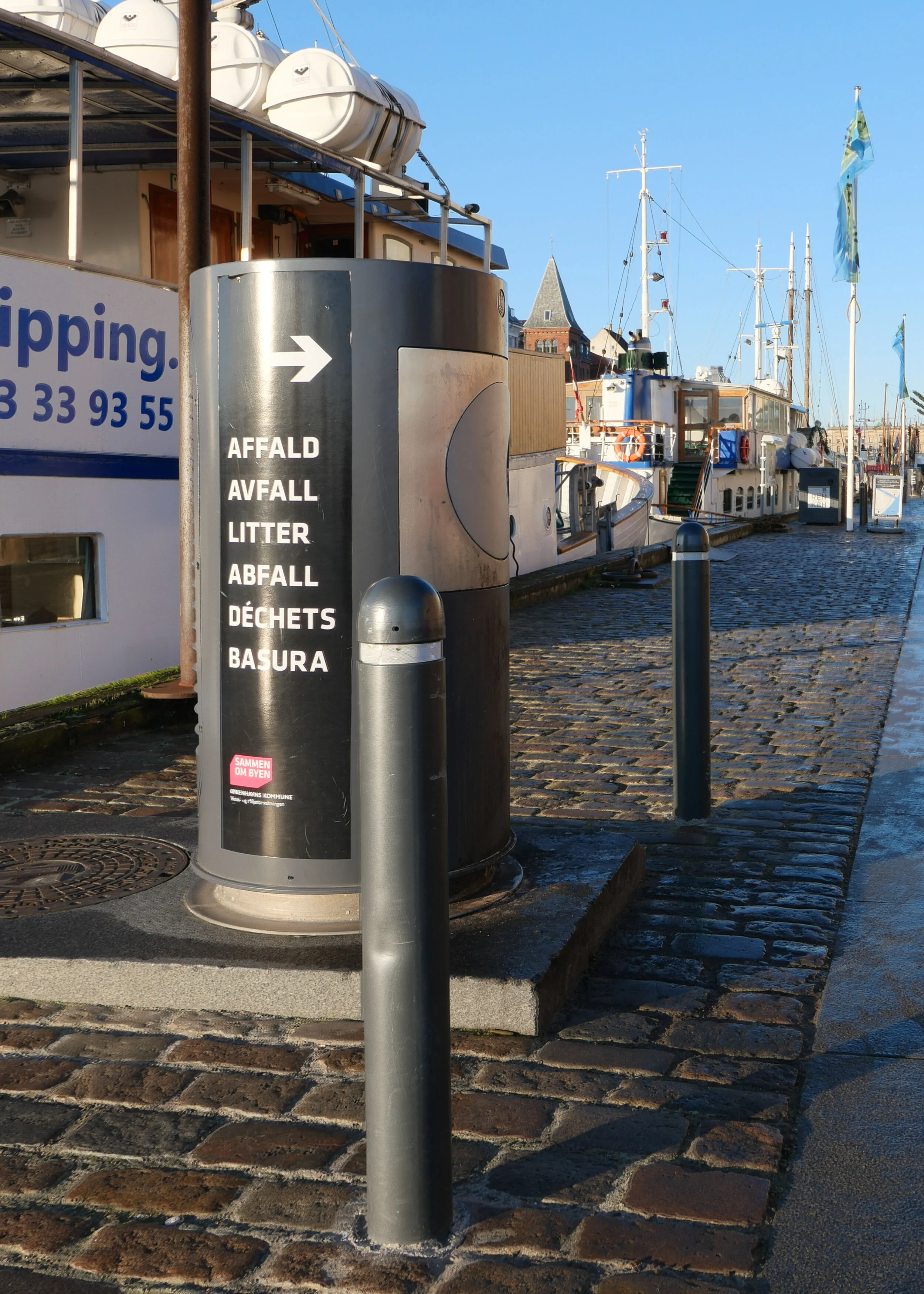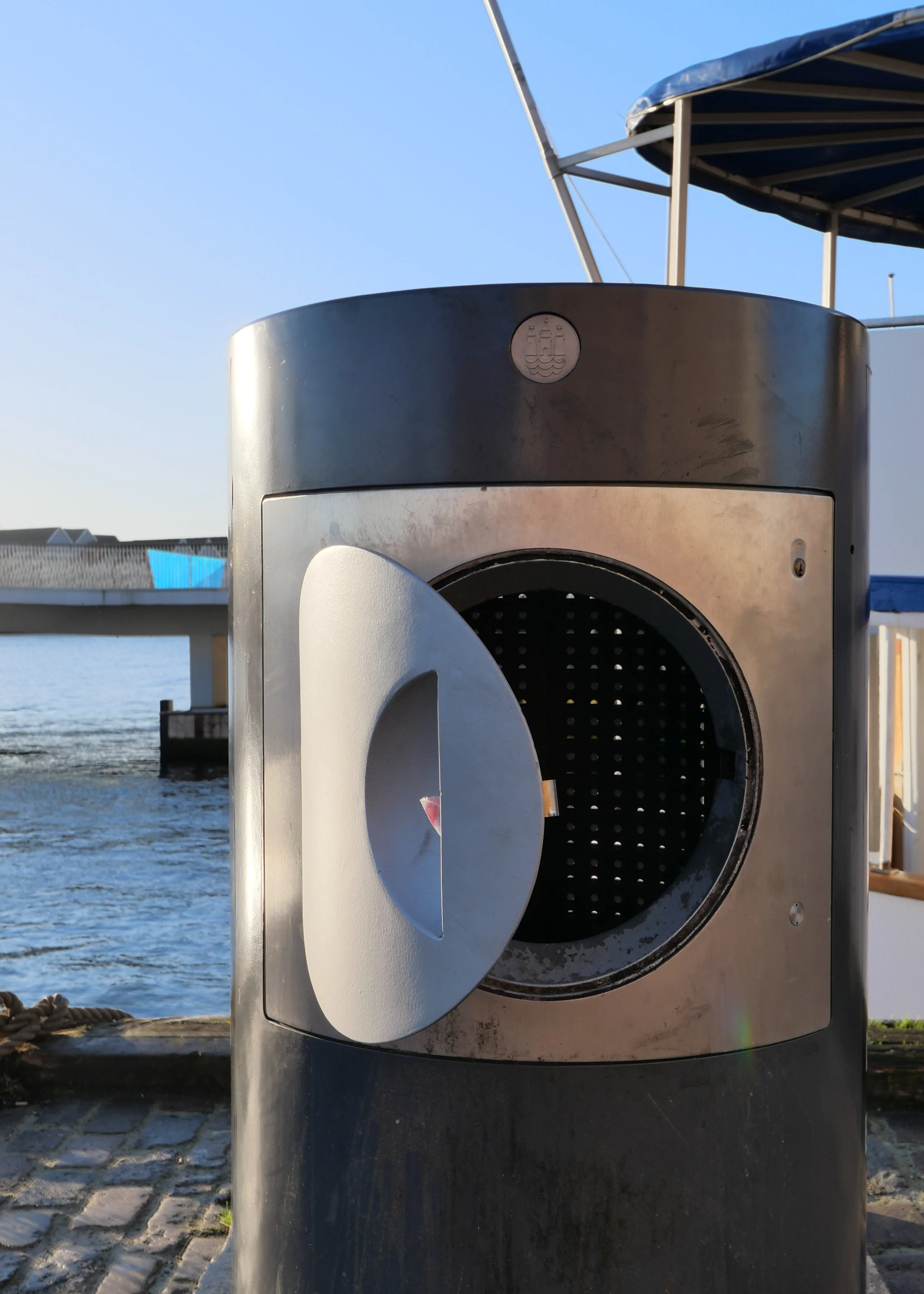umbrellas on Nyhavn
/Tourists are back in Nyhavn and all the umbrellas are back outside the restaurants with all but a couple of the restaurants open.
These large, canvas, umbrellas are now an almost-permanent feature of the quay .... some restaurants had them taken down through the lockdown but many, trying to be more hopeful, simply kept them furled so they were like a long line of pale, skinny sentinels waiting for better times.
Each umbrella is 4 metres square and is set into a permanent housing in the cobbles. They are mostly in blocks of three or four together with fixed gutters between them to take rainwater out to the outer side. There is a narrow space between the umbrellas and the fronts of the buildings so they form fairly self-contained dining spaces with their own electric power for lighting and many have heating and a free-standing bar for serving booze. Many were able to stay open - at least in some form for lunch or drinks or for take away food - when there were tight pandemic restrictions that stopped dining inside.
The restaurants rely on these outdoor spaces for several different reasons. They certainly draw in people passing; they attract customers who might still be reluctant to sit inside a crowded restaurant with the threat of Coronavirus still lingering, and these buildings along Nyhavn are relatively narrow and most have quite small rooms inside that cannot be altered easily to take more tables because these are important and protected historic buildings.
Nyhavn is, without doubt, one of the biggest tourist attractions in the old city but, along with the houses of Gammel Strand and the rows of merchant houses in Christianshavn, this is a major and very significant area, in terms of the history of the city. There are 35 houses between Store Strandstræde and the theatre and all, with courtyards and warehouses and the remains of workshops behind, date back to the late 17th century when Nyhavn was constructed.
The real problem is that the houses are now seen by many as simply facades - little more than a backdrop for selfie photographs - but they are so so much more important than that. For a start, you see glimpses inside of amazing staircases and plastered ceilings and who know’s what survives behind modern alterations?
The book on Historiske Huse i det gamle København has a list of the houses here with brief and good summaries of ownership and their basic history but that was published by the National Museum in 1972 and, as far as I know, there is no catalogue that assess the interiors or looks at the way the rooms in these buildings were arranged or at how that reflects how people have lived here over a period of over 350 years.
For instance, Hans Christian Andersen lived in a house just a few doors down from where I am now. Looking at letters about his furniture and his search for somewhere to live, it looks as if he just had a couple of rooms and there is no indication that he had a kitchen or ever cooked. We are all obsessed with living an independent and self-contained life, so how different was it in the 19th century? Did Hans Christian Andersen always eat out in the bars that must have been along here even then - it was a harbour with an itinerant population who had to eat - or did he have food sent in or a landlady who provide food that was cooked in a kitchen at the back or down in the basement? Do those different ways of living provide ideas for how we might change the way we live in a densely packed city now?
I know that many will argue that economic considerations now have to come first - to stimulate an economic recovery - but there is surely a long-term duty to protect these buildings that are a distinct and significant part of the built heritage of the city. There is a real danger of over exploiting the area so that it no longer becomes a pleasant place for anyone to visit.
During the pandemic it was obvious that more Danes and more citizens were coming to Nyhavn to eat because there were not as many tourists.
There has been a suggestion that restaurants should be allowed to expand onto boats moored here and fitted out for dining and drinking but that would attract even more tourists - and it does tend to be tourists rather than local people who eat here - and more customers has to mean more food deliveries, more waste and, to the detriment of the historic buildings, more kitchens and more food storage. If you have not been back into kitchens and food preparation areas in a busy restaurant then it is difficult to appreciate just how much venting and drainage and so on intrudes into the fabric and there is little space now for storage of packaging and food waste let alone chillers for storage. Will ever larger restaurants mean that they take over more of the residential accommodation so fewer and fewer people live here?
The umbrellas do form a cheap way of expanding the space of these businesses but that is part of a problem that now has to be discussed at a planning and at a political level.
These are profitable businesses and they will be anxious to return to and to increase the number of customers they had before the pandemic but is it time for planners and politicians to understand when enough is enough and find new areas that might be given the Nyhavn treatment to spread the pressure?





















